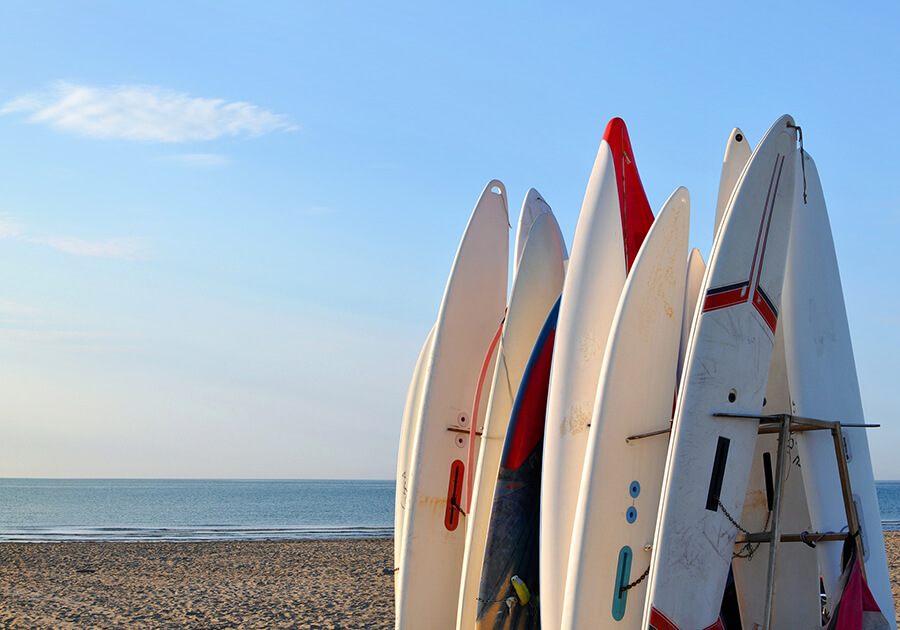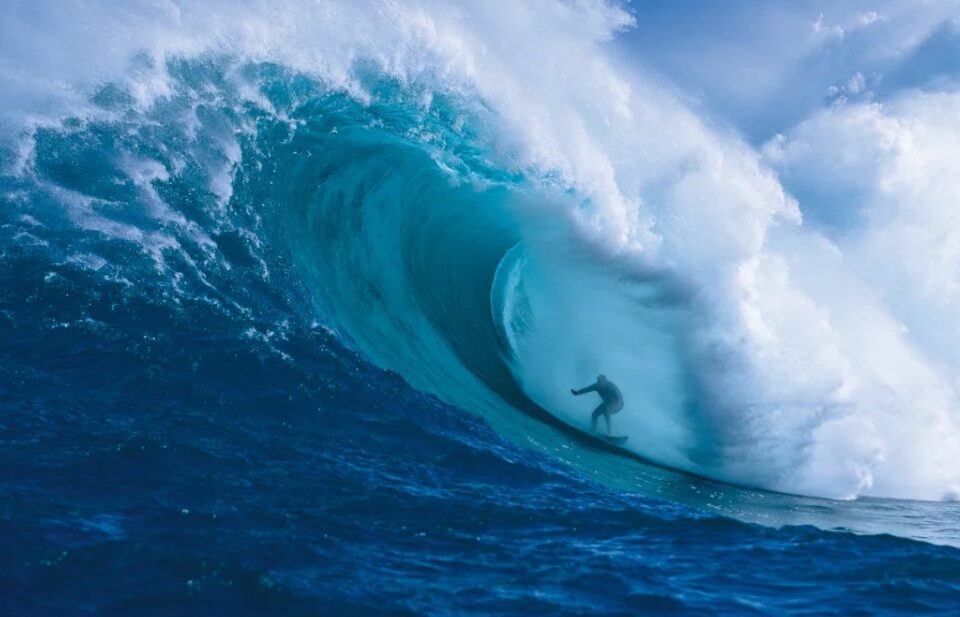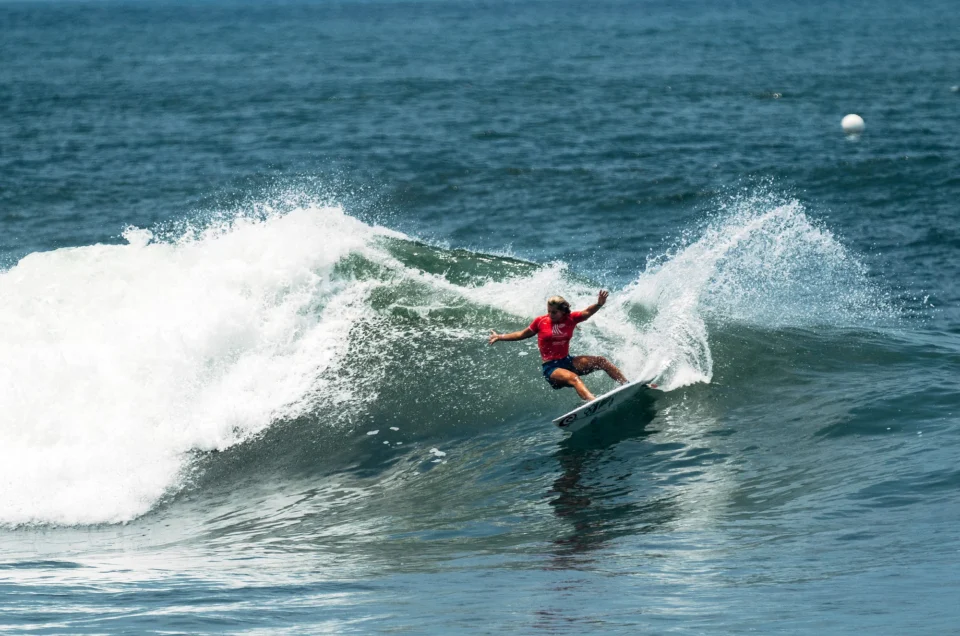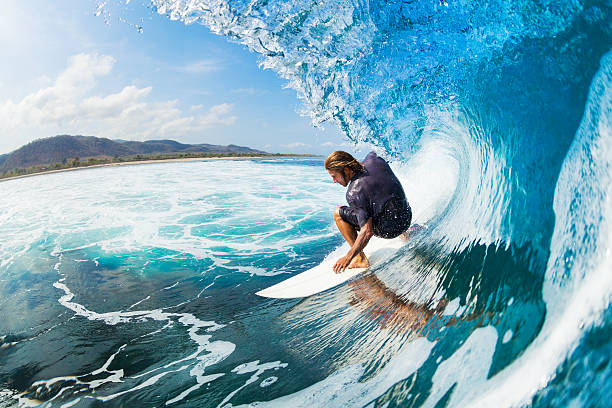To choose the right surfboard, consider three things. Your skill level. Your age and strength. Your preferred style of surfing.
How to Choose a Surfboard by Skill Level
Generally, surfboards are of two types: long boards and short boards. Long boards are better for beginners. The longer wider surface makes the board more stable. Long boards also tend to be thicker than short boards, providing greater floatability and making it easier for beginners to paddle into a wave.
Long boards are usually about 2 feet longer than the height of the rider. Most long boards have pin tails (a tail contoured to a soft point) which allows for greater control in the water. Beginners usually prefer control over maneuverability. They like to cruise down the surface of a wave rather than cut back and sweep. The single fin on long boards allows for more stable cruising.
More experienced surfers often choose short boards. Short boards require skill to balance and maneuver, but they allow for sharp cut backs and crisp release off the tops of waves. Short boards may have a variety of different tail contours. Rounded tails provide a loose, turnable board. Squash tails (where the tail is squared off) make for greater speed but less launch.
How to Choose a Surfboard by Age and Strength
Older surfers may aspire to sweep and soar like twenty-somethings, but this is often impractical. Knowing your own strength is the key to enjoying the surfing experience. Because so much of surfing is paddling, older surfers may prefer a board that permits them to paddle more easily.
Epoxy boards provide greater floatability than more traditional fiberglass boards. Increased floatability makes it easier to paddle because the board experiences less drag in the water. Another factor that contributes to floatability is thickness. An epoxy board that is long and thick requires less strength and endurance than a shorter, thinner fiberglass board.
How to Choose a Surfboard by Preferred Style of Surfing
Broadly speaking, there are two types of surfers: cruisers and shredders. Cruisers like to cruise down the surface of a wave, enjoying a nice long ride. Shredders like to sweep and cut, performing adept maneuvers.
Long boards with their greater stability are usually preferred for cruising. Short boards with their more responsive design are favored by shredders.
Long boards usually have one fin, making for increased stability when holding a straight line. Short boards are available with different fin configurations ranging from two to four fins. An arrangement of three fins is referred to as a “thruster”. For the shredder who seeks speed, launch and maneuverability, the thruster is often preferred.
Whether you are a beginner or an expert, old or young, a cruiser or a shredder, there is a surfboard that is right for you. When you know how to choose the right surfboard and you choose wisely, your surfing experience can be everything you imagined it could be.











